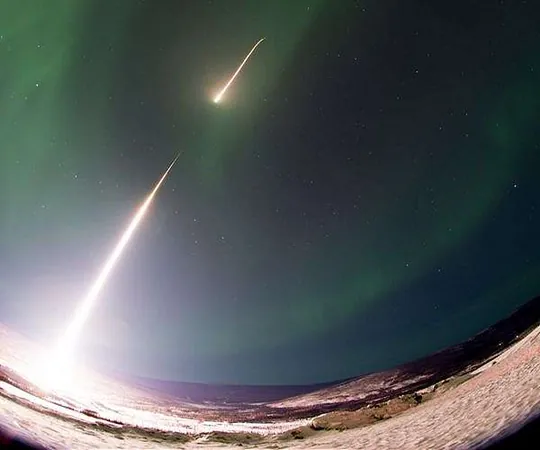
NASA's Groundbreaking Aurora Experiment Set to Launch Three Rockets from Alaska
2025-03-24
Author: Jia
NASA's Groundbreaking Aurora Experiment Set to Launch Three Rockets from Alaska
In a remarkable display of scientific ambition, NASA is preparing to launch three innovative rockets from the Poker Flat Research Range in Fairbanks, Alaska, aiming to unlock the secrets of Earth’s upper atmosphere and its interaction with mesmerizing auroras. This experiment, focused on how auroral substorms impact the thermosphere, could potentially revolutionize our understanding of space weather and its effects on our increasingly technology-dependent society.
The experiment, aptly named Auroral Waves Excited by Substorm Onset Magnetic Events (AWESOME), will involve a four-stage Black Brant XII rocket and two two-stage Terrier-Improved Malemute rockets. The launch is scheduled between March 24 and April 6, 2025, with the rockets slated to take off within a three-hour window following an auroral substorm, allowing researchers to gather real-time data and visual traces visible across northern Alaska.
Led by Mark Conde, a distinguished space physics professor at the University of Alaska Fairbanks (UAF), this ambitious mission incorporates a team of graduate researchers stationed at various monitoring sites throughout Alaska, including Utqiagvik, Kaktovik, Toolik Lake, Eagle, and Venetie, in addition to Poker Flat. NASA will oversee the delivery, assembly, and launch of the rockets, bringing cutting-edge technology and expertise into this pioneering research.
“This experiment addresses a critical question: when the auroras unleash their energy and heat into the atmosphere, how is this energy distributed? Is it mainly pushing air upward in tall plumes, or is it also causing significant horizontal shifts in the atmosphere?” Conde explains. The results could redefine scientific models regarding atmospheric mixing and changes in air composition, which bear significant implications for weather patterns, climate change, and satellite operations.
The thermosphere, situated between 50 and 350 miles above Earth, is typically “convectively stable,” exhibiting minimal air movement. However, auroral substorms disrupt this stability by injecting energy that leads to complex atmospheric dynamics. Conde hypothesizes that acoustic-buoyancy waves—rather than simply vertical convection—drive these changes, suggesting that the effects of auroras may extend farther than previously believed.
“This research is not just about understanding auroras; it’s about enhancing our ability to predict the impacts of their interaction with our atmosphere,” Conde remarks. He emphasizes the mission's practical goal of improving space weather forecasts, critical in today’s world where satellite navigation systems significantly influence daily life.
To achieve their objectives, the two Terrier-Improved Malemute rockets will launch approximately 15 minutes and one hour after the onset of an auroral substorm, while the Black Brant XII rocket will follow just minutes later. These rockets will release colorful vapor tracers at varying altitudes, providing vital information on wind movement and oscillations within the upper atmosphere—observations that could inform future climate models and improve satellite operations.
As excitement builds for the upcoming launches, scientists worldwide eagerly await the findings of the AWESOME experiment, which could illuminate not only the nature of auroras but also the broader dynamics of Earth’s upper atmosphere, making it a significant milestone in atmospheric research and space weather forecasting. Don't miss this incredible opportunity to witness science in action and its implications for our understanding of the universe!




 Brasil (PT)
Brasil (PT)
 Canada (EN)
Canada (EN)
 Chile (ES)
Chile (ES)
 Česko (CS)
Česko (CS)
 대한민국 (KO)
대한민국 (KO)
 España (ES)
España (ES)
 France (FR)
France (FR)
 Hong Kong (EN)
Hong Kong (EN)
 Italia (IT)
Italia (IT)
 日本 (JA)
日本 (JA)
 Magyarország (HU)
Magyarország (HU)
 Norge (NO)
Norge (NO)
 Polska (PL)
Polska (PL)
 Schweiz (DE)
Schweiz (DE)
 Singapore (EN)
Singapore (EN)
 Sverige (SV)
Sverige (SV)
 Suomi (FI)
Suomi (FI)
 Türkiye (TR)
Türkiye (TR)
 الإمارات العربية المتحدة (AR)
الإمارات العربية المتحدة (AR)